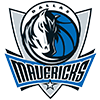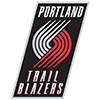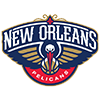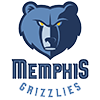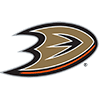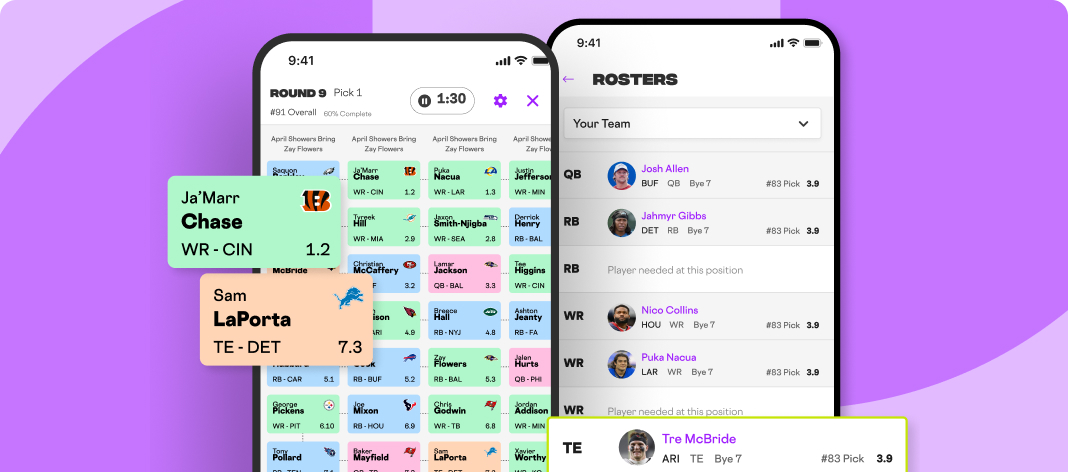Underdog college fantasy best ball draft season began last week, and with plenty of drafts still open, I figured it's time to deliver some tips and tricks of the trade, along with some tools such as the Underdog Best Ball Rankings for the 2025 CFF drafting season!
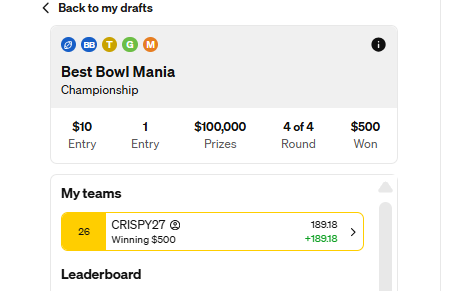
I was fortunate enough to finish 26th last season following many of these tips and guidelines, so here are some hard and fast rules I try to live by.
Underdog College Football Best Ball Rules and Prize Structure
Week 0 games will not count towards scoring.
Rounds
Round 1 - CFB Week 1-11
Round 2 - CFB Week 12
Round 3 - CFB Week 13
Round 4 - CFB Week 14
Rosters
1 QB
2 RB
2 WR
1 TE
1 Superflex
1 Flex
12 Bench
Scoring
Reception (0.5 per reception)
Receiving yards (10 yards per point)
Rushing yards (10 yards per point)
Passing TD (4 Pts)
Rushing or Receiving TD (6 Pts)
Passing yards (25 yards per point)
INT (-1 Pt)
Fumble lost (-2 Pts)
2-pt Conversion (2 pts)
Prize Structure
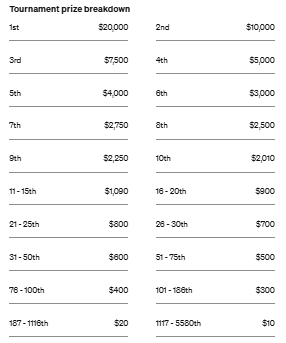
Underdog College Football Best Ball Tools
Along with the cheat, here is the big tool I'll be utilizing for the 2025 CFF best ball draft season. It includes the following features:
- Lineup and bye tracker
- Strength of schedule, SOS differences and schedule weighting
- Bye week assistant
Underdog College Football Best Ball Tips
General Tips
Know the rules/setting
As with any fantasy/best ball you join, know the roster constraints and scoring settings of what you are joining. Knowing these can help immensely in determining the order in which you rank players. Speaking of that, check out our Underdog Best Ball Rankings page, which takes these factors into account.
While the NFL typically uses just one quarterback, the college game employs the Superflex due to the large number of QB options, while most Underdog NFL contests don't. Hence, quarterbacks can be more valuable in this format.
Track your byes and weekly bye volumes
I can't stress this enough, but bye tracking, especially in a season where teams have two or even three byes, is super important to avoiding spreading yourself to thin on any given week. For example, if you have four quarterbacks on your roster and three of them land on the same bye week, you then only have one quarterback remaining for your scoring on a bye week. An injury to that QB? You're getting a zero and you are basically toast.
You also want to limit your bye week exposure more during the playoffs, when you need all hands on deck each week to advance.
Fortunately, we have that covered for you in the spreadsheet I've made.
On top of that, knowing which bye weeks tend to be the heaviest also helps when you are searching for replacements later. The more byes in a given week, the fewer available replacements.
Gear your team toward Championship Week and Playoffs
While winning your league is fine and dandy, notice above that only the top 186 entrants win anything more than $20.
Guess how many of the teams reach the final week of the season? If you guessed 186, come on down, because The Price is Right!

So, that means we should be gearing our lineups to have the best matchups possible in the playoffs and the championship weeks, AKA weighting the schedule. That's one of the many great features found in the spreadsheet I've made for this contest. While you don't want to solely factor in the championship week, it should receive some additional weight.
Diversify your portfolio
You know the basics of the stock market, right? If not, it's essentially that you don't want to invest everything in one stock, because if that stock were to crash, all of your investments would go kaput.

Well, best ball works in a similar fashion, where you obviously will want more shares of players you are targeting, but you should limit your roster exposure or shares so that if a player gets injured or underperforms, it doesn't sink all of your teams.
Finding good bye week pairings
While this doesn't exactly have a stock market equivalent to my knowledge, bye weeks are part of the game. Having good replacements when your quarterbacks are on bye can be key to a successful run, especially if some of your players have byes during the playoffs. The bye week assistant feature in my Google Doc should also assist with that, helping you find players with good matchups to fill your roster in the later rounds, particularly players who fit well into bye weeks and have favorable schedules down the stretch.
Switch up your builds
While there may tend to be a standard of building to fill your lineup, it's often useful to stray from the norm here and there, as it's often these types of lineups that stick out and find a way to differentiate from the pack.
CFB-Specific Tips
Mind the Superflex
As mentioned briefly above, the quarterback position can account for two spots in a given week in this contest, accounting for up to two out of eight possible roster spots (25%) on a given week compared to just 1 of 7 (14.3 percent) of the roster on NFL's Best Ball Mania. Generally speaking, you'll want a Quarterback filling your superflex spot on the roster each week, adding importance to the position.
Volume running backs early?
Similar to the NFL, there aren't as many workhorse running backs as there once were, though they seem to be a bit more common in college than in the pros. That said, this format allows for up to four running backs in a lineup on any given week, and workhorse backs tend to outscore wide receivers on the whole. In a half-point-per-reception format, it further diminishes the value of the wide receiver position in this format. While grabbing a staple WR early may help, this format tends to favor volume running backs.
Again, though, switching up your builds can be crucial to separating yourself, even if it's just switching up which players you are slotting in. Experiment with them.
TE value is at an all-time low?
Now, I don't think we want to fully discount the tight end position. After all, Tyler Warren's run certainly played a big part in the 2025 season, and the top two teams in last year's Bowl Bonanza rostered him. That said, just three of the top 10 finishers did, and a good chunk of the top placers tallied minimal production from the tight end slot in the final week of the season, whereas most at the top had huge weeks from quarterbacks, running backs and wide receivers. There also doesn't seem to be any star-studded returning tight ends near the top like Oronde Gadsden was viewed at the start of last season, so this may be a season to put tight end on the back burner initially.
Balance upside and safety
While targeting players with upside is crucial, and there is plenty of that to go around in the college game, where unknowns abound as teams work to keep their upside players under lock and key to avoid any poaching from other schools. That said, solely chasing upside can leave your roster with holes if multiple players you target end up missing the boat and score you zeroes. There is nothing worse on a best ball roster than seeing your players tally zero on a weekly basis. Thus,a balance of safely starting players and upside targets should be struck to give yourself upside while also avoiding disaster.
That's all I've got for now. Have any tips you'd like to share with the group? Hit me up on X (Twitter) and I'll add them to the list. Best of luck with your lineups!








